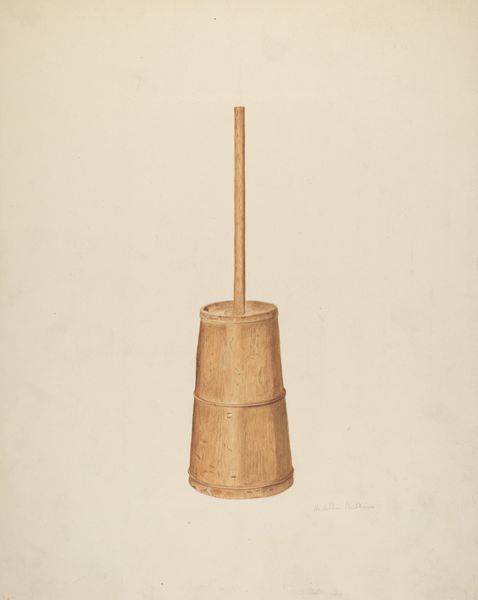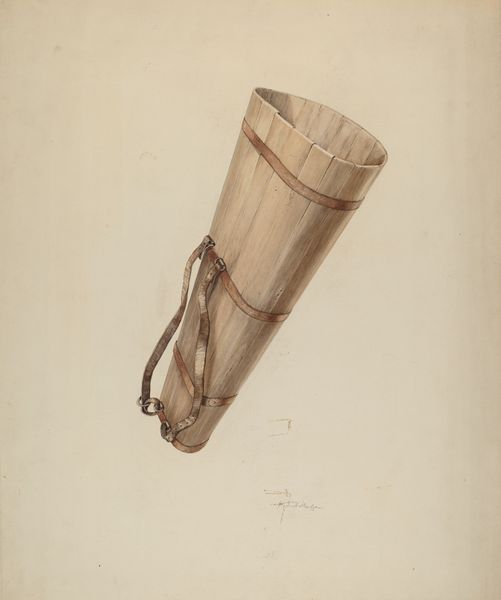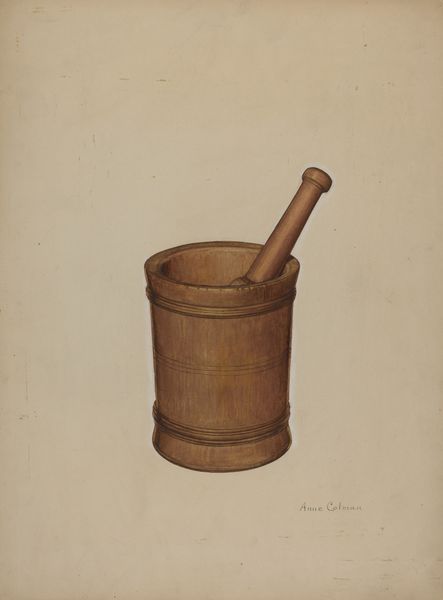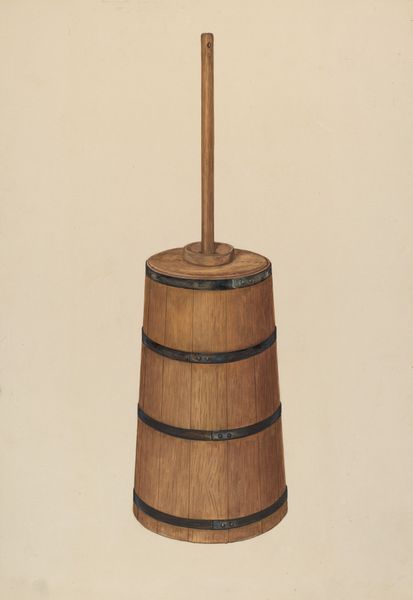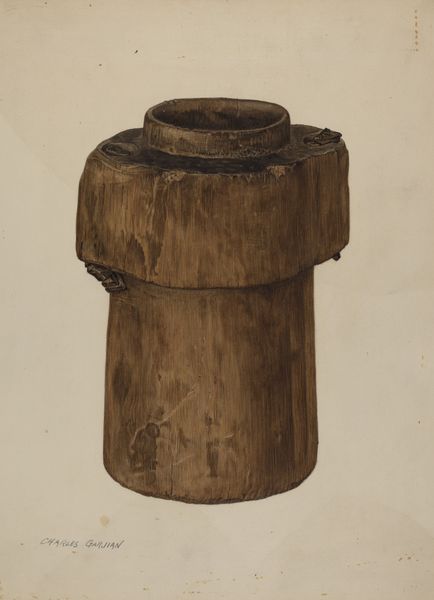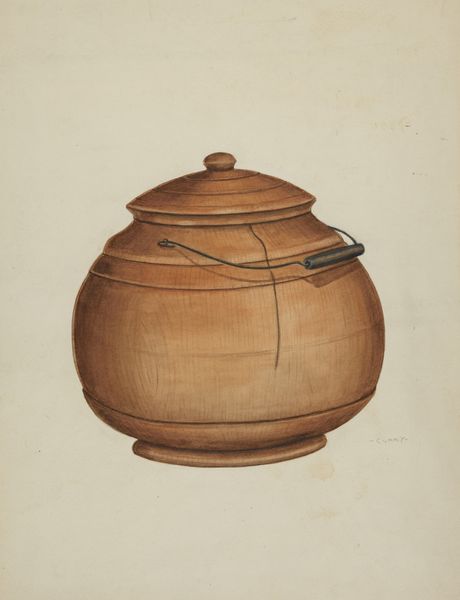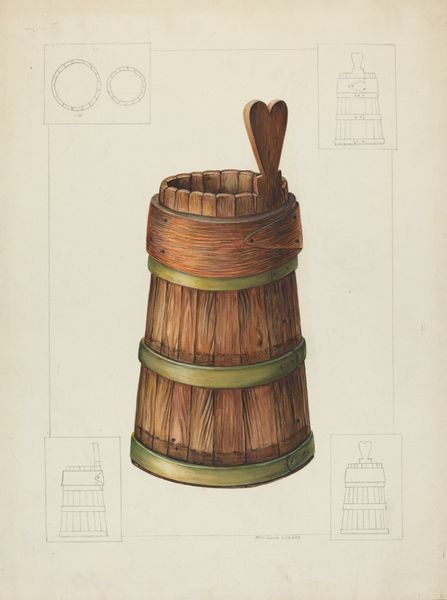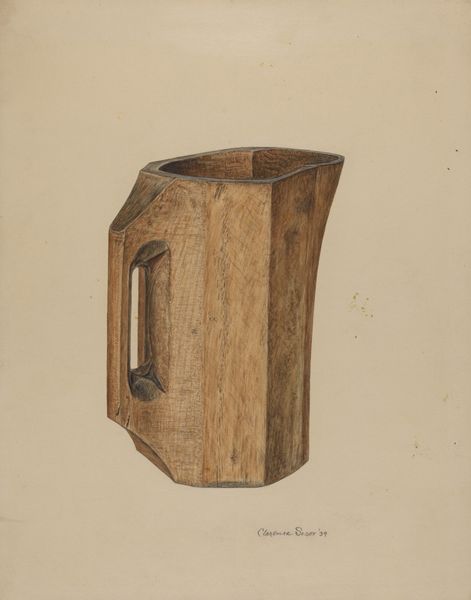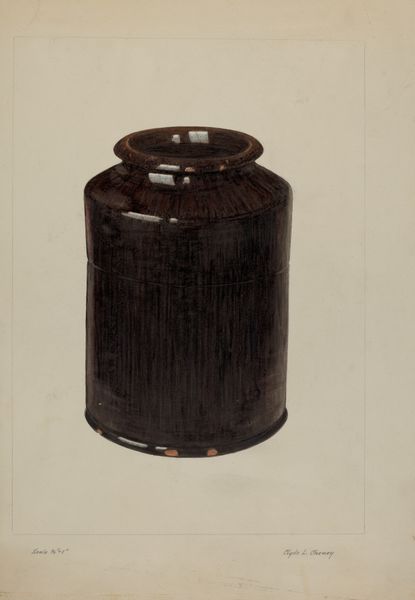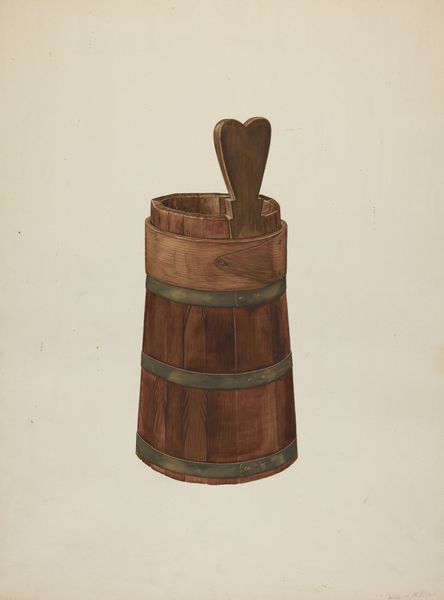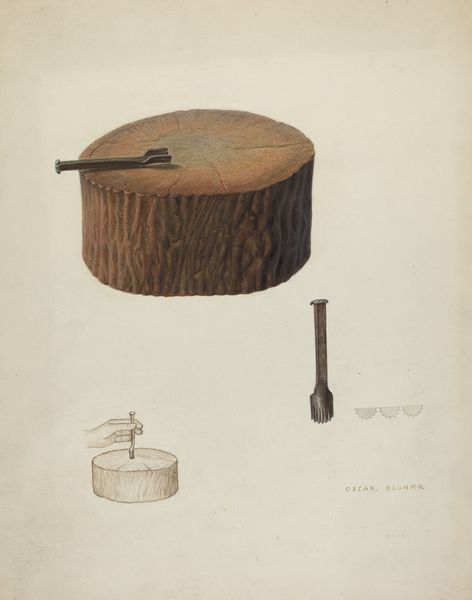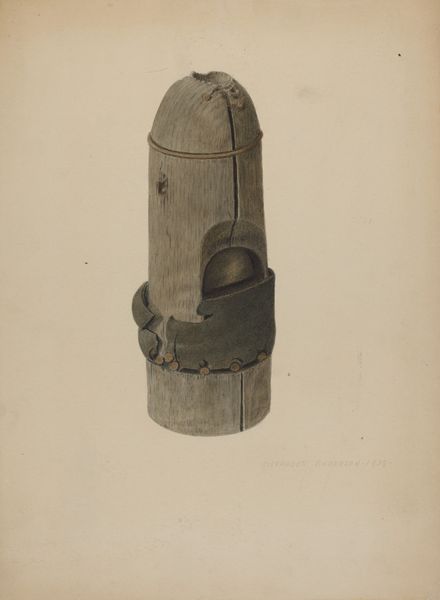
drawing, watercolor
#
drawing
#
watercolor
#
academic-art
Dimensions: overall: 50.1 x 36.3 cm (19 3/4 x 14 5/16 in.) Original IAD Object: 18" high
Copyright: National Gallery of Art: CC0 1.0
Curator: First impressions? For me, this rendering of a wooden butter churn evokes a sense of quiet, rustic simplicity... it feels… comforting. Editor: Comforting, yes, but also incredibly loaded. This object whispers of labor, of gendered divisions, of the romanticized rural past obscuring some very real hardships. Let's unpack this “comfort,” shall we? Curator: Absolutely! What we're looking at is Clyde L. Cheney's watercolor and drawing of a "Wooden Churn," made sometime between 1935 and 1942. It’s a straightforward depiction—academic style, very clean lines. But like you said, there's so much churning beneath the surface. Editor: Indeed. Cheney created this image amidst the Great Depression, a time when notions of self-sufficiency and traditional domestic roles were heavily emphasized. Butter churning itself was typically a woman's task, tied to ideas of domestic virtue and sustenance. This wasn't just making butter; it was performing femininity. Curator: You're right, it's easy to miss those layers. I love the way Cheney captures the textures—the weathered wood, the tight hoops. But now I see it as a kind of quiet monument to labor. Did he idealize that labor? Possibly. Editor: And who benefited from that idealization? Think about the power dynamics embedded in rural life at the time, the often-unacknowledged contributions of women and marginalized communities. The "churn" becomes a symbol of constrained opportunity, of bodies dedicated to repetitive tasks. Curator: It certainly reframes my initial impression. It’s interesting how a simple, almost nostalgic image can contain so much complexity. Editor: Precisely. And isn't that the point? Art invites us to look closer, to question our assumptions. Curator: To acknowledge the hard work—and, yes, the constraints—behind even the simplest pleasures. Editor: And to consider the hands that held the dasher, the stories that have been obscured by time and nostalgia. It’s never just about the churn, is it?
Comments
No comments
Be the first to comment and join the conversation on the ultimate creative platform.
